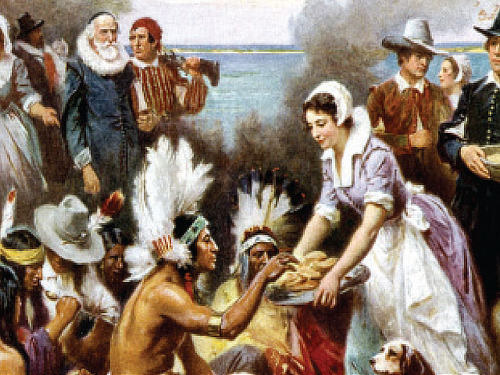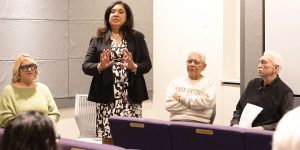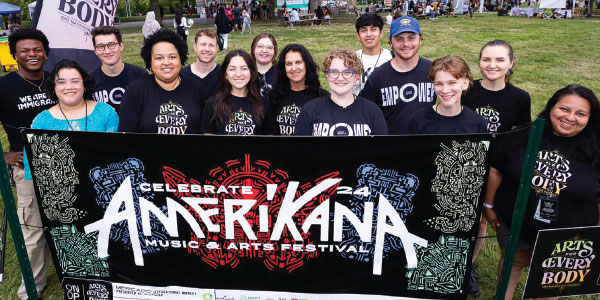Muchos de nosotros conocemos los hechos detrás del primer Día de Acción de Gracias. Pero en estos tiempos de división, muchos de nosotros, los estadounidenses, no vemos el significado de la historia del Día de Gracias.
Los datos básicos de su historia son que los pioneros vinieron en 1620 de Gran Bretaña y se establecieron en Massachusetts, donde hicieron amistad con los nativos americanos locales, quienes les ayudaron a sobrevivir un duro invierno. Ellos celebraron su primer Día de Gracias con un festín en 1621.
El significado de esta historia es que es una historia de inmigrantes. Estados Unidos es una tierra de libertad – y una tierra de inmigrantes, una que está conformada por varias razas, culturas e ideas que hacen a este país fuerte. Es por ello que el Día de Gracias (Nov. 27) debería ser un tiempo en que todos nosotros deberíamos considerar las oportunidades que esta tierra nos ha dado.
Como descendientes de inmigrantes, es importante que valoremos lo que lograron nuestros antepasados para nosotros —y, por supuesto, reconozcamos a aquellos estadounidenses actuales que aprecian las contribuciones de los inmigrantes a esta nación. Teniendo en cuenta que 2014 será recordado por muchos estadounidenses como el año en que el presidente Obama utilizó una acción ejecutiva para permitir a las familias de inmigrantes indocumentados que permanezcan unidas, está sería la mejor manera para celebrar este Día de Gracias.
El Día de Gracias va más allá del pavo y el pay de calabaza. Es un tiempo donde los estadounidenses deberíamos pensar sobre quiénes somos y representar lo que somos. Es un momento en que las familias de diversos orígenes adaptan sus costumbres y las incorporan a la celebración estadounidense de este día. Es un tiempo para que todos nosotros, los estadounidenses, recordemos que vivimos en una tierra de diversidad y actuemos en consecuencia, como buenos representantes de nuestras respectivas razas.
Valoremos lo que tenemos y guardemos el Día de Gracias como una celebración del amor, el compartir y la apreciación de las personas que nos rodean —y una apreciación de los inmigrantes que vinieron antes que nosotros.
[divider]
The real Thanksgiving story
Many of us know the facts behind the first Thanksgiving. But in these divisive times, many of us Americans don’t see the significance of the Thanksgiving story.
The basic facts of the Thanksgiving story are that the Pilgrims came in 1620 from Great Britain and settled in Massachusetts, where they befriended the local Native Americans, who helped them survive a harsh winter. They celebrated the first Thanksgiving with a feast in 1621.
The significance of the Thanksgiving story is that it’s an immigration story. America is a land of freedom – and a land of immigrants, one that’s formed by various races, cultures and ideas that make of this country strong. That’s why this Thanksgiving (Nov. 27) should be a time when all of us should consider the opportunities this land has offered us.
As immigrant descendants, it’s important that we value what our ancestors achieved for us – and, of course, recognize those current Americans who appreciate immigrants’ contributions to this nation. Given that 2014 will be remembered by many Americans as the year President Obama used executive action to allow undocumented immigrant families to stick together, it would be the best way to celebrate this Thanksgiving.
Thanksgiving goes beyond the trappings of turkey and pumpkin pie. Thanksgiving is a time where we Americans should think about who we are and represent who we are. It is a time when families from different backgrounds adapt their customs and incorporate them into the American Thanksgiving celebration. It is a time for all of us Americans to remember we live in a land of diversity and to act accordingly, as good representatives of our respective races.
Let’s value what we have and observe Thanksgiving as a celebration of love, sharing and an appreciation of the people that surround us – and an appreciation of the immigrants who came before us.











